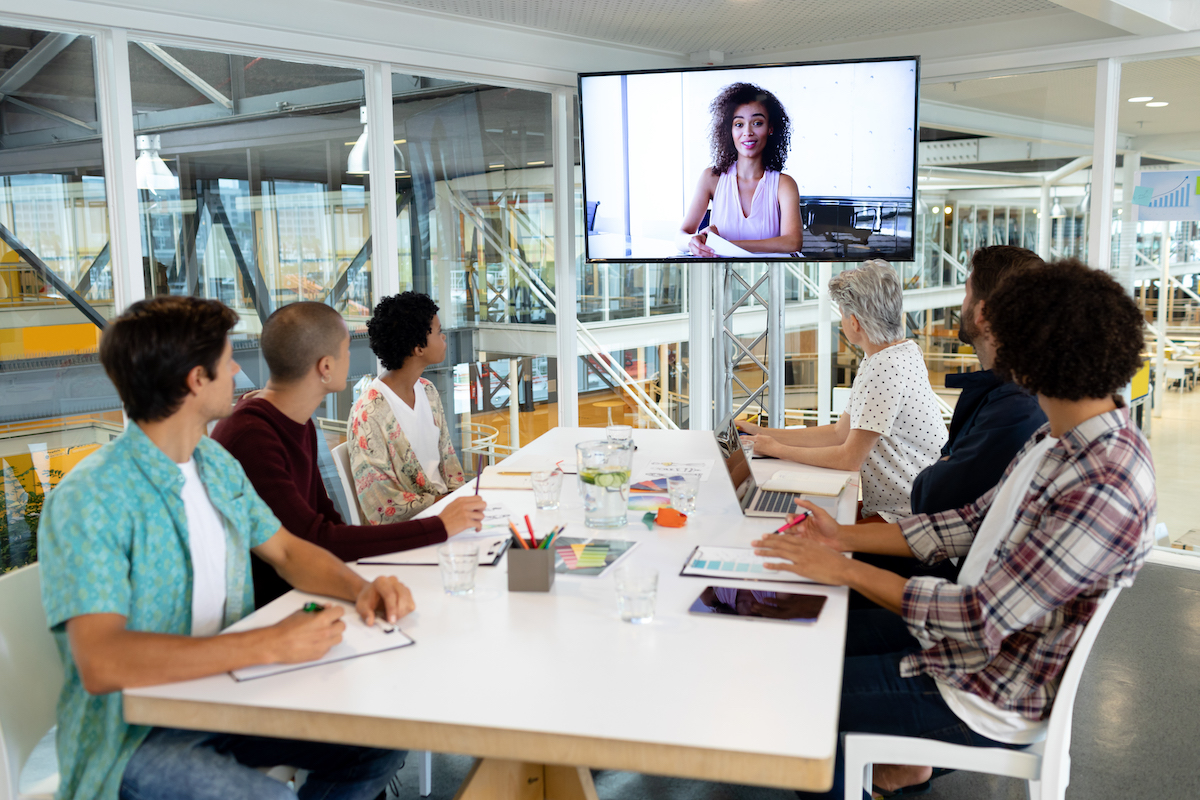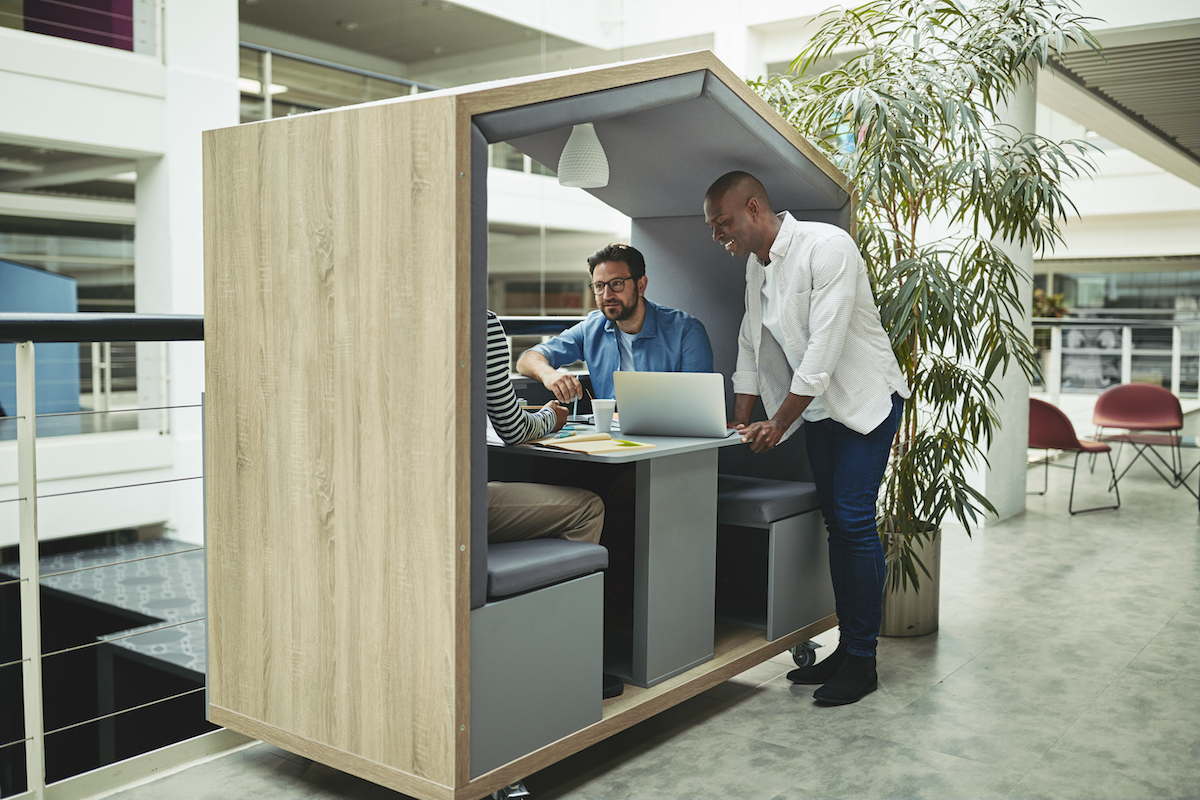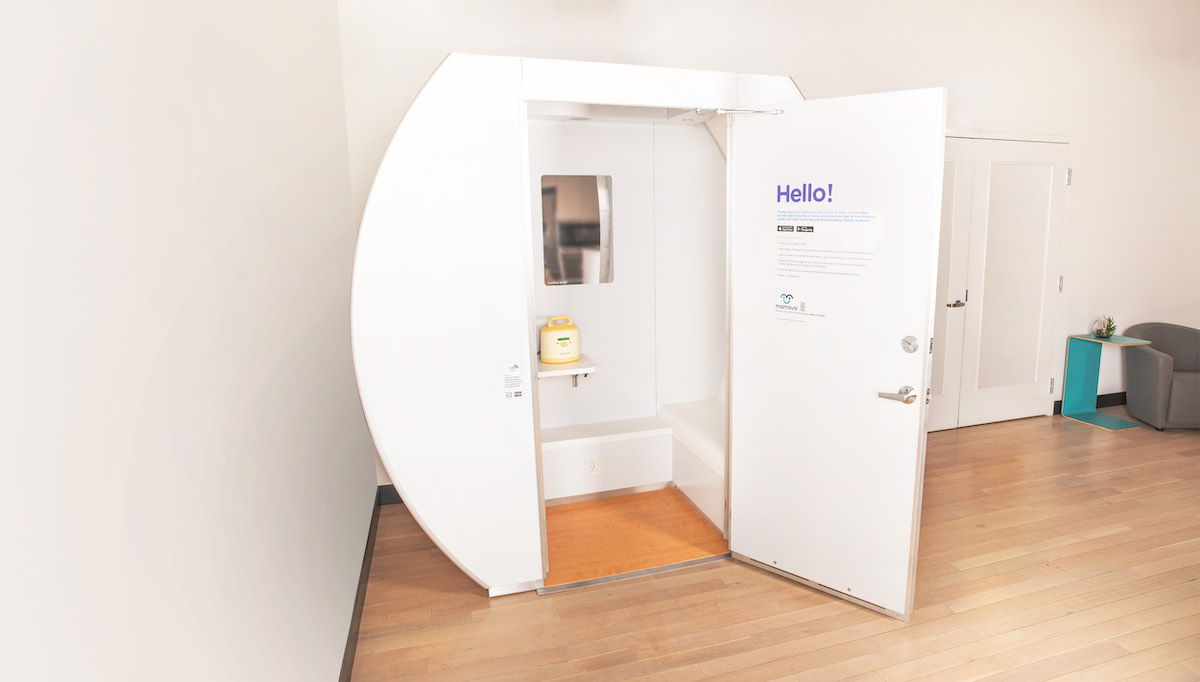
3 Ways to Create Digital Equity in a Hybrid Workforce
Experts suggest that nine out of ten organizations are moving to a hybrid workforce, but as we learned in this podcast, hybrid is the hardest.
As so many make the switch to a hybrid workforce, a multitude of new considerations are brought to the forefront in creating an equitable workforce and workplace. On a Zoom screen all the boxes are the same size, but what happens when three people are in one room and only one is virtual? Is the experience digitally equitable? Does the remote person feel "less than” or “left out" when cameras go off?
In order to make hybrid stick, we must find ways to create an equitable experience.
This will be an inspiring design challenge for architects, designers, and policymakers within each company.
To help explore this issue, on a recent Clubhouse session, ThinkLab welcomed equity and workplace experts Aram Lulla, division president at Lucas Group and Forbes Human Resource Council member, and Tracy Brower, Ph.D., principal of applied research at Steelcase, accomplished author, and Forbes contributor, to inspire us to reimagine and plan to embrace the hybrid era of work that serves the remote employee, on-site employee, and employer equally well.
Here are 3 ways to create digital equity in a hybrid workforce:
Proactively Combat Proximity Bias (Mentally and Physically)
Proximity bias is the idea that employees with close physical proximity to their team and company leaders will be perceived as better workers and ultimately find more success in the workplace than their remote counterparts.
17 months ago, this relatively foreign term made its way into many organizational meetings. In a hybrid workforce, unconscious bias to whether a person is physically in the office or not becomes a very real concern for leadership and management.
Lulla shares that the key to combatting this phenomenon first involves tackling the mental stigma through training. “When training on proximity bias, the mental approach is simple,” he says. “We need to train people that it does not matter where a person works and that a manager's preferred work mode should not reflect on how they view the productivity of their team. You can still connect, build relationships, and evaluate an employee's performance all effectively remotely.”
Secondly, Lulla shares some ideas for physical space to combat proximity bias. “Over the last year, many have been forced to focus on enabling employees to work remotely, though in most surveys few employees wish to work remotely full time,” he says. “As many return to a physical workplace, tackling equity will allow us to leverage the benefits of both worlds: the privacy afforded in a remote work model and the connection and collaboration that is ubiquitous with gathering in person.”
Lulla’s advice for designing in physical space is to “try to provide every individual with a similar experience, through the physical setup, technology tools, and designing for spaces and experiences that can be equivalent across the spectrum of locations people chose to work from.”
Create Transparency Through Documented Guiding Principles
Our experts suggest that the key to maintaining a healthy corporate culture is the transparency of the principles that guide the company as a whole, as well as a well-documented and clear hybrid policy.
“Fairness is a fundamental need, and it's not only the reality of fairness, but [also] how we perceive it, and those who believe to be treated unfairly will be much more likely to leave and seek new employment,” says Brower, an expert on workplace happiness.
“We are in the midst of nothing less than a talent revolution, and a company's hybrid policy is a part of the employee value equation [that] will be decision-making criteria for people.”
While studies show that it is best for the employer and employee if some sense of structure and guidelines are in place, clarity on the reasoning behind those policies is also critical. “If we're super transparent with people about what our principles are and how they're guiding our decisions, that creates cultures of trust and openness and respect,” Brower says. “Additionally, if employees see the leaders within an organization embracing a new work model and living a somewhat shared experience, that creates access to leadership and even greater trust in the policies created.”
Lulla adds that transparency is key to an organization, even if that leads to attrition. “It really depends on the industry and how important the pressing of palms and meeting in person is,” he says. “For some companies that is a core value, and there may be employees who choose to seek employment elsewhere that affords them the flexibility they are looking for in their life. But that type of employee movement is expected, and if employees feel well informed, hopefully fewer are leaving due to uncertainty or a feeling of unfairness.”
Design for Tomorrow’s Challenges
It's not enough to solve for today's challenges – we must solve for tomorrow's as well. Considering all the conversations, employee surveys, and human psychology studies that have occurred over the past year and a half, even the best, most informed strategy will be irrelevant if a company cannot remain nimble to the needs of the workforce and the demands of the workplace to support the organization as a whole.
“With all the shifting in the workforce, we can't necessarily design for individuals, but we may be able to just design enough variety and choice to support teams with all kinds of workflows in all types of spaces,” Brower says.
Lulla adds: “If leaders engage and use all of the various types of spaces, it models the principle of employee choice and flexibility and encourages others to take advantage of workplaces designed for work mode preference.”
We asked our guests to leave us with a bold challenge. Lulla challenges the design community to “find the equity in experience, finding new ways to bring the best elements of working from home into the design of the hybrid office so that employees can have a very similar experience regardless of where they are working that day.”
“Now is the time to reset and reimagine how our companies and spaces can create community connections and belonging,” Brower adds.
“Let us use all we have learned to inform workplace design to build the conditions for happiness—the spaces that foster the culture and sharing of social identities that help us to learn, connect, and grow.”
Are you on Clubhouse? We’d love to hear from you on Fridays at 9 A.M. EST in our club: Design + Data w/ThinkLab.
Erica Waayenberg is the head of research and content development for ThinkLab, the research division of SANDOW. At ThinkLab, we combine SANDOW Media’s incredible reach to the architecture and design community through brands like Interior Design Media, Metropolis, Luxe, and Material Bank with proven market research techniques to uncover relevant trends and opportunities for the design industry. Join in to explore what’s next at ThinkLab.Design/Join-In.



